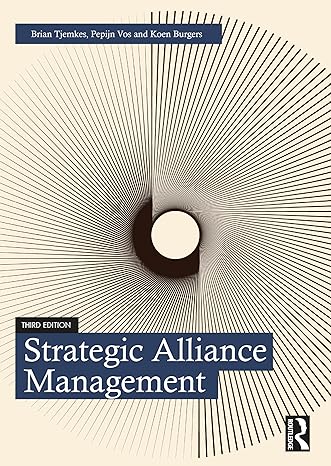The Holst Centre is an independent open-innovation centre for R&D that develops generic technologies for wireless autonomous
Question:
The Holst Centre is an independent open-innovation centre for R&D that develops generic technologies for wireless autonomous sensor technologies and fexible electronics. A key feature of the Holst Centre is its partnership model with industry and academia, which is based on shared development roadmaps and programmes. This kind of cross-fertilization enables the Holst Centre to tune its scientifc strategy to industrial needs. The Holst Centre was set up in 2005 by IMEC (Flanders, Belgium) and TNO (the Netherlands), with support from the Dutch Ministry of Economic Affairs and the Government of Flanders. The centre is named after Gilles Holst, a Dutch pioneer in research and development and the frst director of Philips Research. Located on High-Tech Campus Eindhoven, the Holst Centre benefts from the state-of-the-art on-site facilities and has more than 170 employees, representing roughly 25 nationalities and commitments from approximately 35 industrial partners.
During the 1990s and the early 2000s, Philips Research (formerly Natlab) found it increasingly diffcult to provide cutting-edge but affordable R&D services to the Philips product divisions. Rapid technological developments made it increasingly diffcult for Philips Research to remain a front-runner in all of the necessary technology domains using only its in-house R&D resources. The future was in combining knowledge that was developed and owned by Philips with knowledge of other frms and research institutions in a more open environment. To this end, the closed ‘Philips Research Campus’ was transformed into the open ‘High-Tech Campus Eindhoven’. Moreover, many of the Philips-owned laboratories on this campus were made accessible to third parties through a separate organization called ‘MiPlaza’. Supporting activities and facilities such as restaurants, sports facilities and shops were centralized in a building called ‘the Strip’, which became the central meeting place of the High-Tech Campus and a vital element in open communication and exchanging information. Independent organizations were set up to facilitate and orchestrate open innovation. The primary role of these organizations is to bring people and organizations together and facilitate active communication, information sharing and co-research. The most important facilitator is the Holst Centre.
At the Holst Centre, leading scientists work on research programmes together with scientists of partner companies and universities. These parties participate in research programmes.
Questions 1 Explain why the mechanisms the Holst Centre uses to facilitate knowledge exchange and guarantee knowledge protection are efective.
2 Explain why the Holst centre promotes pre-emptive research and openness among participants but does not consider marketization a primary task.
3 How would these mechanisms operate in a single alliance between two partners?
Step by Step Answer:

Strategic Alliance Management
ISBN: 978-1032119250
3rd Edition
Authors: Brian Tjemkes ,Pepijn Vos ,Koen Burgers






